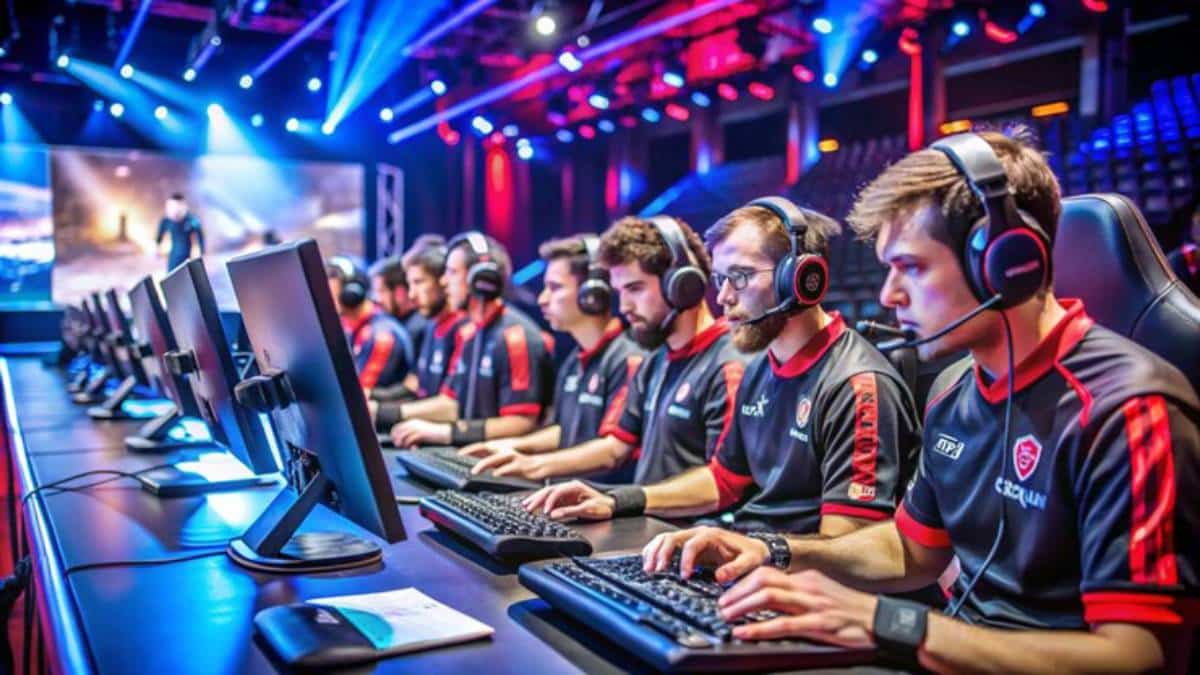
The Evolution of Esports Media Coverage
In recent years, esports has skyrocketed from a niche hobby to a global phenomenon. This change is about the rise of competitive gaming and how the media covers esports. Esports media has changed with technology and culture. It also shows how we watch media now. This blog will look at the rise of esports journalism. It will cover the history of esports media and how we report on competitive gaming today.
Esports media started with small blogs, forums, and amateur casting. Now, it has grown into a significant industry. Today, we have professional journalists, global media outlets, and top-notch multimedia productions. As competitive gaming grows, the need for smart, timely, and engaging coverage increases. This change shows how media shapes public views and makes esports a respected field.
Key Benefits
Esports journalism is growing. This shows how popular and legitimate competitive gaming has become. As esports’ popularity grows, the demand for dedicated media coverage also increases. This coverage offers insights, analysis, and updates for a larger audience. Understanding the evolution of esports media coverage is crucial for several reasons:
Increased Visibility and Legitimacy
Esports media coverage has grown significantly, making it more visible and respected. While mainstream media once ignored esports, they are now investing in coverage for major tournaments and events. Big names like ESPN, BBC, and The Washington Post now have esports sections, which shows how important and large the industry has become.
This shift brings esports to more people and makes gaming a serious sport. Media validation helps the public, schools, and corporations accept esports more. This support strengthens esports as an actual career and professional field.
Economic Impact
The growth of esports journalism has significant economic implications. More media coverage means more chances for advertising revenue, sponsorship deals, and partnerships. Esports media sites like Dexerto, Dot Esports, and Upcomer highlight how focused content can raise traffic and revenue.
This funding helps media outlets and boosts the entire esports ecosystem. It benefits players, teams, and event organizers, too. It allows for better infrastructure, higher production values, and deeper storytelling. This can enhance the viewer experience and boost long-term engagement.
Cultural Significance
Esports journalism highlights the stories of players, teams, and communities. This helps show the cultural importance of gaming. It gives a place to talk about diversity, mental health, and how technology impacts society. Esports coverage includes profiles of new stars, memorable matches, and essays on gaming’s impact on society.
By doing so, esports media helps shape the gaming narrative and its role in modern culture. It challenges what gaming means in society and moves the focus from entertainment to important topics, such as identity, inclusion, and digital expression.
Additional Expert Tips & Common Mistakes to Avoid
As esports journalism evolves, both new and seasoned journalists need to be aware of best practices and common errors:
Best Practices
- Stay Informed: The esports industry is fast-paced and constantly changing. Journalists must keep up with new developments, trends, and controversies. This helps them give accurate and timely reports. Subscribe to industry newsletters for daily insights. Attend virtual press conferences. Follow key figures on social media.
- Connect with the Community: Connecting with players, teams, and fans helps you gain insights and discover exclusive stories. It also allows journalists to discover different games and esports scenes. Joining Discord groups, chatting live, and participating in Twitter talks builds trust and understanding.
- Tell a Story: Numbers and results matter, but a good story grabs readers’ attention. Personal stories, rivalries, and the human side of esports make articles more engaging. Feature stories about rising stars and underdogs help readers feel more connected. Coach insights also add depth and emotion to the content.
Common Mistakes

- Diversity in Esports: Esports has players and fans from many different backgrounds. Not recognising this diversity can result in biased or incomplete coverage. Journalists should look for voices from underrepresented communities. They should also explore stories that go beyond mainstream titles.
- Neglecting Ethics: As with journalism, maintaining ethical standards is crucial. This includes verifying sources, avoiding conflicts of interest, and being transparent with readers. Transparency builds trust, and adherence to journalistic integrity elevates the entire industry.
- Underestimating Complexity: Esports can be complex, with different games, formats, and rules. Journalists need to grasp these details to deliver accurate and helpful stories. Misreporting game mechanics or tournament structures can erode credibility and alienate informed readers.
Advanced Insights
Esports journalism is a young field. There is plenty of room for new ideas and growth. Here are some key tips and advice for anyone wanting to succeed in this field:
Embrace Multimedia Storytelling

Digital media has changed esports journalism. It’s not just about written articles anymore. Multimedia storytelling, like videos and podcasts, boosts audience engagement and offers a richer experience. Highlight reels, behind-the-scenes documentaries, and real-time Twitter coverage connect fans to the action.
Multimedia helps journalists cover tough topics, such as meta shifts, patch updates, and player trades. Visual aids make information easier to access and remember.
Leverage Data and Analytics
Data is crucial in esports, from player statistics to viewership numbers. Journalists can use data and analytics for deeper insights. This helps readers grasp the importance of various events and trends. Tools like Esports Charts, GGPredict, and HLTV provide rich datasets for deeper storytelling.
Using heatmaps, win-rate graphs, or performance stats can make an article stand out and help the journalist appear as an analytical expert.
Explore Niche Topics
Major tournaments and popular games grab the headlines, but many untold stories exist in niche areas of esports. Discovering new games, fresh scenes, and grassroots projects can offer new perspectives and draw in loyal fans.
Covering college competitions, community mod tournaments, or local metas can attract more readers. It shows a dedication to thorough coverage.
Conclusion: The Evolution of Esports Media Coverage

Esports media coverage has significantly evolved. This shift mirrors the changes in both gaming and media. As esports continues to grow and evolve, so will how it is covered and consumed. Aspiring journalists have a unique chance to lead in an exciting field.
Whether you’re an experienced journalist or new to esports, many stories are ready to be shared. Stay informed, connect with the community, and try new storytelling methods. This way, you can help esports journalism grow and change.
Esports media goes beyond reporting. It captures the emotion, excitement, and cultural impact of a digital revolution. Looking ahead, we must ask: how will esports media change? What role will you take in shaping its future?


